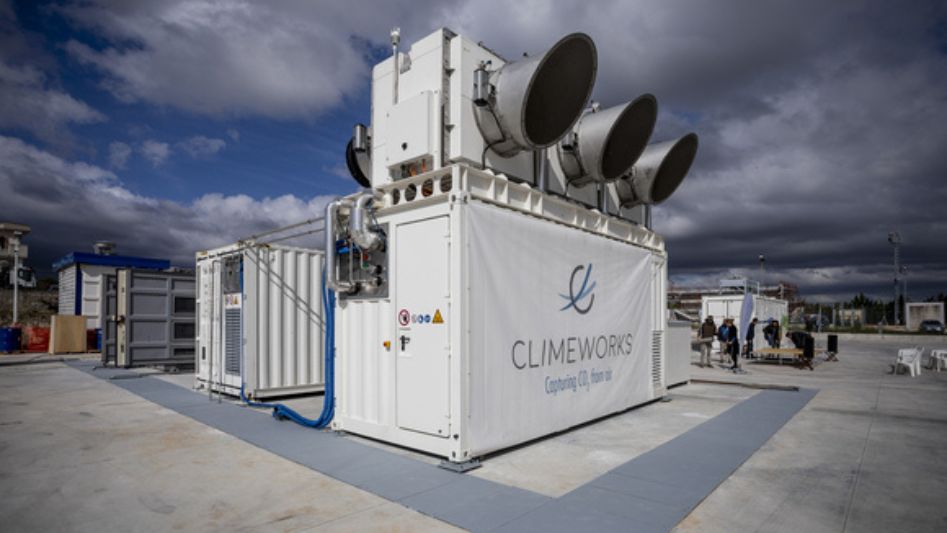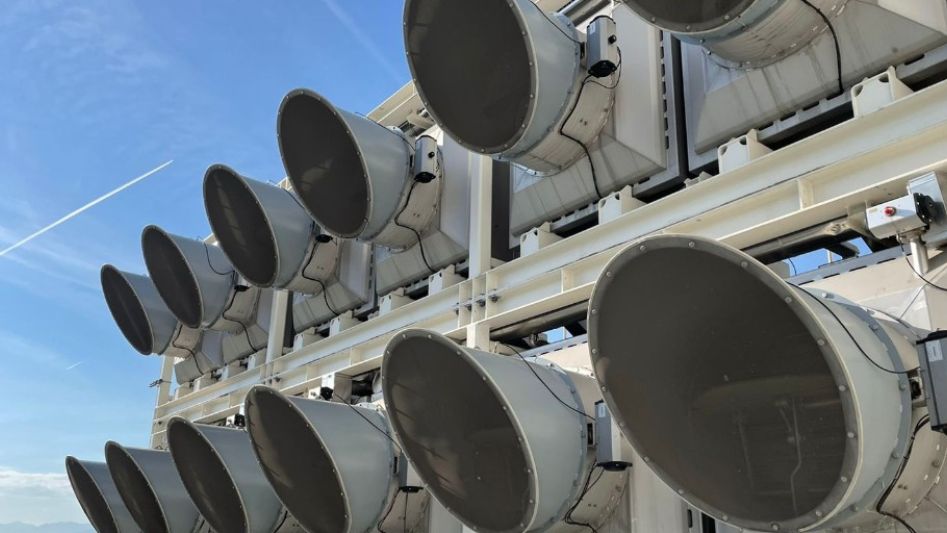Learn about CO2 Direct Air Capture and how it could be used to remove carbon dioxide from the atmosphere. Read about the pros and cons of this possible solution to climate change.
Table Of Content
- Introduction
- What is Direct Air Capture?
- Advantages of Direct Air Capture
- DAC Can Achieve Net-Zero or Negative Emissions
- Disadvantages of Direct Air Capture
- Direct air capture can enable enhanced oil recovery
- Conclusion
- FAQ
- You May Also Like
- External Links
According to the Intergovernmental Panel on Climate Change (IPCC), the quantity of carbon dioxide (CO2) originating from the combustion of fossil fuels is the biggest human-generated input to the warming of the world since the 1700s. The need to develop various means of reducing global warming has become increasingly urgent as the effects of the climate catastrophe become more destabilizing to both human and environmental systems. Direct air capture (DAC) technology is one instrument that has the potential to aid in this endeavor.

While DAC technology is fully functional at this time, its wider application is complicated by a number of difficulties. Limitations such as high upfront costs, high energy demands, and environmental risks make DAC an unattractive choice for reducing CO2. Another drawback is that it requires more land area to be implemented than other mitigation methods, such as CCS. However, DAC may prove to be a valuable long-term option due to the pressing need for efficient solutions to atmospheric warming and the prospect of technological advancements that enhance its effectiveness.
What is Direct Air Capture?
Using a combination of physical and chemical processes, carbon dioxide may be captured directly from the air and then removed from the planet’s atmosphere using the direct air capture technique. Once the CO2 has been extracted, it is stored in underground reservoirs or utilized to create durable products like cement or plastic. Despite its limited use so far, DAC technology has the potential to become a key element in the arsenal of strategies for combating climate change.
Advantages of Direct Air Capture
DAC offers a number of benefits over competing technologies since it is one of the few methods for removing CO2 from the environment after it has already been produced.
DAC Lowers Atmospheric CO2
The capacity of DAC to lower atmospheric CO2 concentrations stands out as a primary benefit. Carbon dioxide (CO2) accounts for just approximately 0.04% of Earth’s atmosphere, but its ability to absorb and slowly release heat makes it a powerful greenhouse gas. Even though it doesn’t trap as much heat in the atmosphere as other methane and nitrous oxide gases, it has a bigger impact on warming since it hangs around longer.
NASA climate scientists report that the latest reading of carbon dioxide in the air was 416 parts per million (ppm). In light of the dramatic rise in CO2 concentrations since the beginning of the industrial period, and notably in the last few decades, the experts at the IPCC have issued a dire warning that urgent action is needed to prevent global warming from exceeding 2 degrees Celsius (3.6 degrees Fahrenheit). If we want to prevent potentially catastrophic temperature rises, it’s probable that we’ll need to use technology like DAC.
It can be employed in a wide variety of locations
DAC plants provide more deployment options than CCS technology. To remove CO2, DAC may function independently of an emissions source like a power plant. Actually, the requirement for substantial pipeline infrastructure may be avoided by locating DAC plants at sites where the collected CO2 can be stored in geologic formations. Leaks of carbon dioxide are less likely to occur if the pipes carrying the gas are shorter in length.
DAC Requires a Smaller Footprint
DAC systems have a substantially lower footprint on the landscape than other carbon sequestration strategies, such as bioenergy with CCS (BECCS). BECCS refers to the conversion of biomass, such as trees, into usable forms of energy like electricity and heat. Carbon dioxide gas produced by burning biomass is collected and stored. This method of removing carbon dioxide from the air demands a lot of area for plant cultivation since it relies on the growth of organic matter. In 2019, 1 metric ton (1.1 US tons) of CO2 per year produced by a BECCS facility needed between 2,900 and 17,600 square feet of land, whereas the same amount of CO2 production from a DAC plant required just 0.5 to 15 square feet.

It can be used to remove or recycle carbon
After collecting carbon dioxide from the atmosphere, DAC facilities hope to either store the gas or put it to use in the production of permanent or temporary goods. Long-lasting goods like cement and insulation would tie up the trapped carbon for a long period of time. Carbon elimination may be achieved by the use of CO2 in long-lasting goods. Carbonated drinks and synthetic fuels are two examples of short-lived goods made from collected CO2. It is termed “carbon recycling,” since the CO2 is only held in these goods momentarily.
DAC Can Achieve Net-Zero or Negative Emissions
Unlike using fossil fuels, which produce significant carbon emissions, replacing them with synthetic fuels made from collected CO2 would result in zero net carbon emissions. Although this does not lower atmospheric CO2 levels, it prevents a further increase in the overall CO2 balance. The amount of carbon dioxide (CO2) released into the air may be lowered if the gas is removed from the environment and stored in cement or other geological structures. In this case, the quantity of carbon dioxide (CO2) caught and stored might be greater than the amount of CO2 emitted, leading to a negative emissions scenario.
Disadvantages of Direct Air Capture
Several major challenges to using the technology exist, including price and energy utilization, but it is hoped that the primary barriers to widespread deployment of DAC will be overcome soon.
DAC Consumes a Significant Amount of Energy
Extremely powerful fans are utilized in the section of a DAC plant that houses the sorbent materials required to absorb the CO2. The energy needed to run these fans is substantial. High amounts of energy are also needed to manufacture the components for DAC operations and to preheat sorbent components before they can be reused. To achieve the atmospheric carbon reduction objectives specified by the IPCC, 2020 research published in Nature Communications estimates that the quantity of liquid or solid sorbent DAC required might reach 46% to 191% of the total world energy supply. DAC will have a harder time attaining carbon neutrality or carbon negativity if fossil fuels are employed to produce this energy.
It’s currently very expensive
To remove one metric ton of carbon dioxide in 2021, it will cost between $250 and $600. Whether liquid or solid sorbent technology is employed, the size of the operation, and the kind of energy used to power the DAC process all have a role in the final price tag. There are a lot of moving elements that must be accounted for when trying to estimate what DAC may cost in the future. Since atmospheric CO2 is diffuse, its removal requires a great deal of effort and costs a lot of money. Cost recovery is difficult since there are now few markets prepared to buy carbon dioxide.
Environmental Risks
The carbon dioxide (CO2) produced by DAC has to be transported and then injected into geological formations for long-term storage. A pipeline might break, the groundwater could be contaminated during injection, or the injection itself could cause earthquakes due to the disturbance of geological formations. Additionally, solid sorbent methods require around 1.6 metric tons of water per metric ton of CO2 captured, whereas liquid sorbent DAC utilizes between 1 and 7 metric tons of water per metric ton of CO2 captured.
Direct air capture can enable enhanced oil recovery
To extract oil from deeper in the ground, CO2 is pumped into the well as part of enhanced oil recovery. To qualify as carbon neutral or carbon negative, the CO2 utilized in improved oil recovery must be produced either by direct air capture or the combustion of biomass. Using CO2 for improved oil recovery may be counterproductive if the quantity of CO2 injected is greater than or equal to the amount of CO2 emitted by burning the oil that is recovered.
Conclusion
Permanent, effective, immediate, protecting the biosphere, requiring little land, and leaving a small carbon footprint over their entire life cycle are all characteristics of direct carbon capture offsets. Due to the certainty, measurability, and immediate nature of DCC offsets, their purchase on the VCM can contribute to efforts to reduce the effects of climate change. DCC offsets do not reduce your own emissions, come at a high price, and are not yet scalable to compensate for all of our global emissions.

FAQ
What are the benefits of capturing air directly?
Direct air capture allows for more options when it comes to where the system can be located. Since DAC doesn’t need farmland, it won’t have as much of an effect on agriculture and other uses of the land. The land area required for widespread deployment of DAC systems varies with the specific systems involved and the energy source being used.
What is the problem with direct air capture?
Carbon dioxide in the air is so dilute, at only about 390 parts per million, that it is difficult to capture. A sizable area of surface is required for the process to be effective in absorbing the CO2.
What are the major disadvantages of carbon capture?
It’s possible that bacteria in volcanic rock are digesting the carbonates, which would lead to the production of methane gas. Carbon capture and storage also has the drawback of being insufficient to effectively combat climate change.
You May Also Like
- WHAT IS DIRECT AIR CAPTURE? DOES IT WORK?
- HYDROGEN ON DEMAND FOR VEHICLES
- WHY YOU NEED SUSTAINABILITY IN YOUR BUSINESS STRATEGY
- WHAT IS WIND ENERGY? DEFINITION, TYPES AND MORE
- IS A HOME WIND TURBINE RIGHT FOR YOU? THE SURPRISING FACTS
